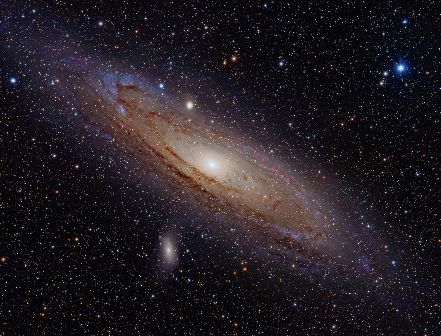Solving the Distant-Starlight Dilemma
Isaiah 45:12
“I have made the earth, and created man upon it: I, even my hands, have stretched out the heavens, and all their host have I commanded.”
Scientists who reject the Bible believe that man’s ability to see light from distant stars and galaxies can be likened to a deadly torpedo that sinks the ship of young earth creationism. But they are not taking into consideration that there are many possible solutions to how light from distant stars could reach the Earth very quickly.
 One such theory is explained by Creation Moments Board Member Dr. Donald Clark, who holds a Ph.D. in physical biochemistry. He cites both Isaiah 42:5 and Isaiah 45:12 as evidence that the heavens are not uniform but have been “stretched out” by God.
One such theory is explained by Creation Moments Board Member Dr. Donald Clark, who holds a Ph.D. in physical biochemistry. He cites both Isaiah 42:5 and Isaiah 45:12 as evidence that the heavens are not uniform but have been “stretched out” by God.
Now if the very fabric of space is stretched in parts, he explains, then light would travel much faster through these “stretchy” parts than through the non-stretched parts. He uses a guitar string as an analogy. Tightening a string produces a higher-pitched sound when plucked because it causes the sound wave to travel faster through the string. In a similar way, stretched space would cause light to travel faster through it.
In his article, “Making Sense of Light from Distant Stars,” Dr. Clark writes: “Using Einstein’s General Relativity equations, Mark Amunrud at the August 2013 International Conference on Creation suggested that light from the most distant galaxies … would reach Earth in just about one week.”
So while Scripture doesn’t directly say that light travels much faster between the galaxies to arrive on Earth quickly, it does give us enough clues to piece together one solution to the distant-starlight dilemma.
Prayer: Heavenly Father, thank You for creating the universe in such a way that Adam and Eve didn’t have to wait around for billions of years before they could gaze upon the stars You created! Amen.
Ref: https://creationmoments.com/resources/blog/201407/making-sense-light-distant-stars. Dr. Donald Clark, Ph.D., “Making Sense of Light from Distant Stars”, 7/7/14. Photo: Andromeda galaxy. Courtesy of Adam Evans. (CC BY 2.0)